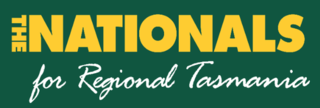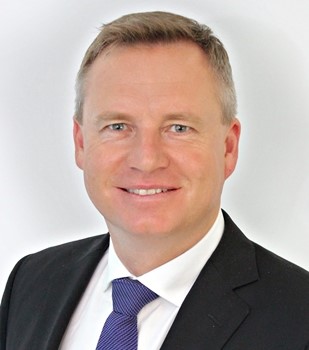Related Research Articles
Electoral systems of the Australian states and territories are broadly similar to the electoral system used in federal elections in Australia.

The House of Assembly, or Lower House, is one of the two chambers of the Parliament of Tasmania in Australia. The other is the Legislative Council or Upper House. It sits in Parliament House in the state capital, Hobart.

The Parliament of Tasmania is the bicameral legislature of the Australian state of Tasmania. It follows a Westminster-derived parliamentary system and consists of the Governor of Tasmania, the Tasmanian House of Assembly, and Tasmanian Legislative Council. Since 1841, both Houses have met in Parliament House, Hobart. The Parliament of Tasmania first met in 1856.

The electoral division of Rumney is one of the 15 electoral divisions in the Tasmanian Legislative Council. The division is located in Southern Tasmania to the east of the division of Pembroke.

The 1912 Tasmanian state election was held on Tuesday, 30 April 1912 in the Australian state of Tasmania to elect 30 members of the Tasmanian House of Assembly. The election used the Hare-Clark proportional representation system — six members were elected from each of five electorates.

The 1913 Tasmanian state election was held on Thursday, 23 January 1913 in the Australian state of Tasmania to elect 30 members of the Tasmanian House of Assembly. The election used the Hare-Clark proportional representation system — six members were elected from each of five electorates.

The 1916 Tasmanian state election was held on Saturday, 25 March 1916 in the Australian state of Tasmania to elect 30 members of the Tasmanian House of Assembly. The election used the Hare-Clark proportional representation system — six members were elected from each of five electorates.

The 1959 Tasmanian state election was held on 2 May 1959 in the Australian state of Tasmania to elect 35 members of the Tasmanian House of Assembly. The number of members were increased from this election from 30 to 35. The election used the Hare-Clark proportional representation system — seven members were elected from each of five electorates.

The 2014 Tasmanian state election was held on 15 March 2014 to elect all 25 members to the House of Assembly. The 16-year incumbent Labor government, led by the Premier of Tasmania Lara Giddings, sought to win a fifth consecutive term in government, but was defeated by the Liberal opposition, led by Opposition Leader Will Hodgman, in a landslide victory. Also contesting the election was the Greens led by Nick McKim. The Palmer United Party made a significant effort in the election.

The 2018 Tasmanian state election was held on 3 March 2018 to elect all 25 members of the Tasmanian House of Assembly.
This is a list of House of Assembly results for the 2014 Tasmanian election.

The 2021 Tasmanian state election was held on 1 May 2021 to elect all 25 members to the Tasmanian House of Assembly.
This is a list of House of Assembly results for the 2018 Tasmanian election.

The Tasmanian Nationals are a political party in the Australian state of Tasmania, aligned with the National Party of Australia. The party is not currently registered with the Tasmanian Electoral Commission, and is not separately registered with the Australian Electoral Commission, unlike the other state branches of the Nationals.
This article provides information on candidates who nominated at the 2021 Tasmanian state election, which was held on 1 May 2021.

The next Tasmanian state election is scheduled to be held on or before Saturday 28 June 2025 to elect all 25 members plus an extra 10 new seats to the House of Assembly. The House of Assembly uses the proportional Hare-Clark system, and will elect 35 members from five seven-member constituencies. Upper house elections in the 15-seat single-member district Legislative Council use full-preference instant-runoff voting, with election dates staggered and conducted separately from lower house state elections.
Periodic elections for the Tasmanian Legislative Council were held on 1 May 2021. The three seats that were up for election are Derwent, Mersey and Windermere. They were last contested in 2015. Only two of the three seats were actually contested, as the incumbent candidate for Mersey, Mike Gaffney, was returned unopposed.
This is a list of House of Assembly results for the 2021 Tasmanian state election.
This is a list of members of the Tasmanian House of Assembly, elected at the 2021 state election.
The 2022 Nigerian elections will be held throughout 2022. During the year, the governors of Ekiti and Osun states will be elected on 18 June and 16 July, respectively. Additionally, there will also be elections to fill vacant seats in the House of Representatives and state houses of assembly along with local elections in Adamawa State, Benue State, Edo State, Enugu State, the Federal Capital Territory, Imo State, Katsina State, and Kebbi State.
References
- ↑ "Results in Bass for the election held on 23 January 1913". Tasmanian Electoral Commission. Retrieved 2 April 2021.
- ↑ "Results in Darwin for the election held on 23 January 1913". Tasmanian Electoral Commission. Retrieved 2 April 2021.
- ↑ "Results in Denison for the election held on 23 January 1913". Tasmanian Electoral Commission. Retrieved 2 April 2021.
- ↑ "Results in Franklin for the election held on 23 January 1913". Tasmanian Electoral Commission. Retrieved 2 April 2021.
- ↑ "Results in Wilmot for the election held on 23 January 1913". Tasmanian Electoral Commission. Retrieved 2 April 2021.